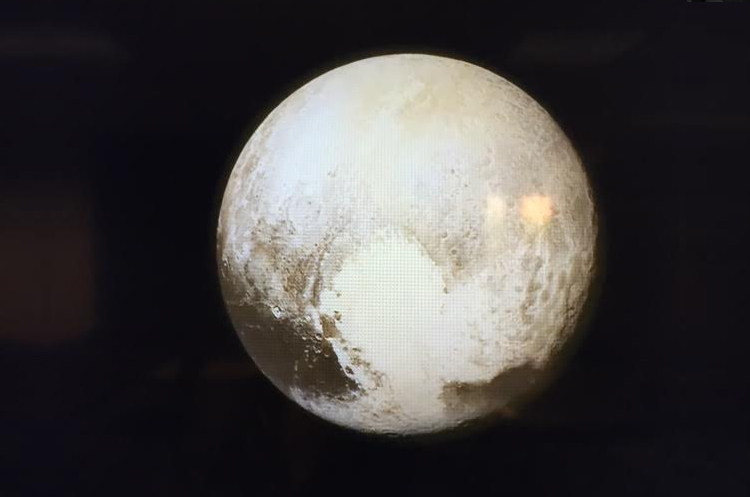by Robert Rosenkranz
It is with great wonderment and awe that I will always remember July 14, 2015. The day we explored Pluto.
It began like any other day but would end as anything but. That evening, I stood in the presence of many of NASA’s finest scientists and other fellow space enthusiasts. Together we were ready to witness one of the greatest moments in our modern history. 9-1/2 years in the making, NASA’s pioneering mission to Pluto was about to reach the closest point in its “fly-by”.
At a mind-blowing million miles a day, this little spacecraft, barely larger than a grand piano, had made its way from this place we call home—Earth—to a world not long ago totally unknown to us 3 billion miles away.
85 years ago, Clyde Tombaugh, an uneducated farmer’s son from Kansas discovered this distant entity from a location in Flagstaff, Arizona. Though he died almost 20 years ago, that man’s spirit was as present in the room on this night as he was on the day he first laid eyes on Pluto through the lens of his telescope. Mr. Tombaugh’s children were also with us at the Johns Hopkins Applied Physics Laboratory as he—in the form of ashes—approached Pluto onboard New Horizons. It was an incredible moment for the scientists involved, many of whom have devoted a dozen years of their professional lives to this journey of exploration. An earlier generation explored all the other planets in our solar system—so for them this was a once in a lifetime opportunity to explore the unknown. And what an interesting world they found: five moons, an atmosphere, a surface with flat plains and vast craters, and a complex range of chemical elements.
Originally deemed a planet, Pluto’s planetary status has been in dispute. During the question and answer period, a brave 11-year old asked if Pluto was a planet. One of the female scientists involved with the New Horizons encounter offered a priceless answer: “Little people are still people and little planets are still planets.” At only 1% of the size of the earth, this little planet was making big history.
Not only is New Horizons the fastest spacecraft ever launched but it is also extremely accurate. Its arrival 72 seconds after originally forecasted is like getting to dinner reservation in Midtown Manhattan within a one hundredth of a second window. Its proximity to its destined location is akin to a ballistic missile being within a tennis ball of its target.
When the New Horizons probe “phoned home” on the evening of July 14, 2015, I was there. I was privileged to shake the hand of Alan Stern, principal investigator on the project. The title doesn’t sound grandiose, but this mission is the first time NASA entrusted a single individual with responsibility for all aspects of a major undertaking, including propulsion, guidance, instrumentation, and scientific experimentation. In comparison, I have made a trivially small bet on Alan, who is also serving as the chief scientist for the Worldview Exploration project. In an earlier blogpost, I discussed my rooting interest in this venture, which will one day take me and my fellow travelers to the edge of space.




